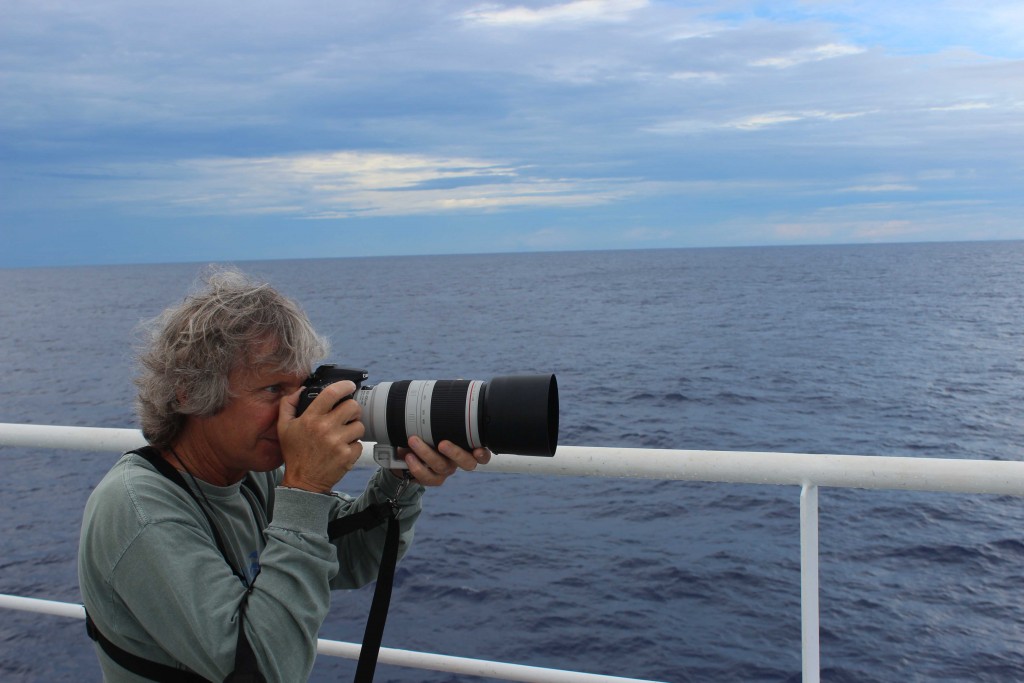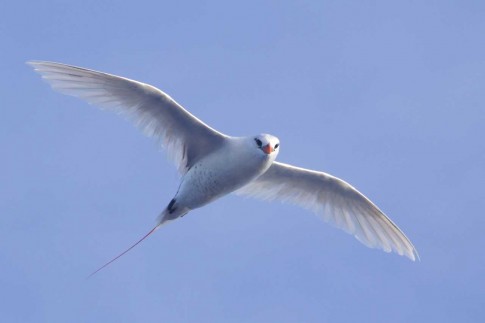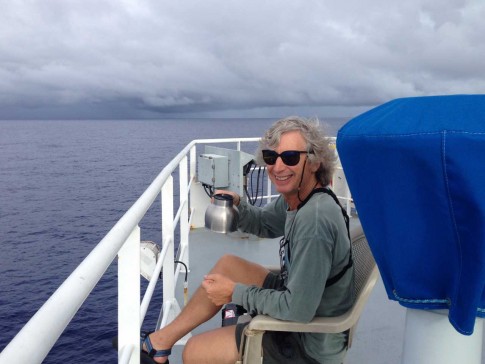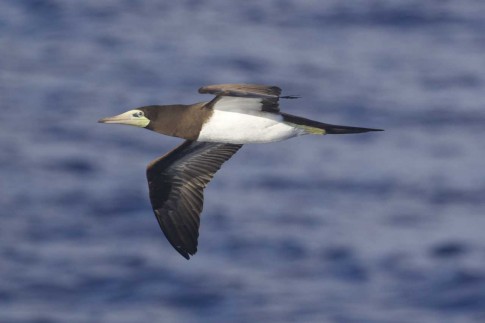- or: ‘What else happens on a mapping ship?’
+++ A guest entry by Michael Force, USFWS Seabird Observer +++
Are there seabirds way out here in the middle of nowhere? Why am I outside all day, in sizzling scorching sun, or in torrential tropical rainstorms, staring at what appears to be a vast empty ocean? While the science party aboard the R/V Kilo Moana are directing their sights downward, far to the bottom of the central tropical Pacific Ocean, I’m staring forward, scanning the ocean, ship to horizon, for the apex predators—seabirds—that eke out a living on the open sea. It can look pretty darn bleak out here, water, salt water, for thousands of kilometres in every direction. How can a bird possibly survive in this harsh environment?
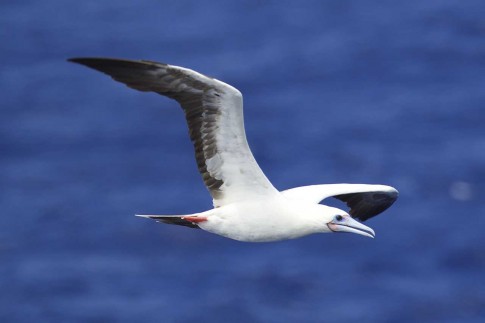
Red-footed Booby, a pan-tropical seabird, the bane of flyingfish everywhere. (Photo by Micheal, ©USFWS)
The ocean may appear to be a single homogenous mass, unchanging and unforgiving; however, appearances are deceiving. Differing physical and biological properties, such as salinity and temperature, create water masses with identifiable characteristics and associated biota. Seabirds are closely associated with various marine habitats; some species can even be used to identify particular water masses. Furthermore, they are highly mobile foragers. Their extremely energy-efficient method of flying allows them to travel enormous distances in search of food. Equatorial current systems and water mass boundaries, for example, concentrate marine organisms, such as fish, which are targeted by foraging seabirds. Facilitated foraging, whereby multi-species feeding flocks take advantage of small forage fish driven to the surface by predatory fish, such as tuna, is extremely important in tropical pelagic ecosystems. It’s truly an amazing spectacle to see one of these “feeding frenzies”. The ocean surface boiling with small fish, hundreds of flyingfish taking to the air attempting to escape voracious tuna while the sky above is a screaming mass of hungry seabirds, perhaps as many as 20 species, gorging at the marine equivalent of a fast-food outlet.
The Pacific Ocean is a hot-bed of seabird diversity. The two primary requisites are here: plenty of remote, predator-free islands for nesting, and high forage potential. While the breeding locations of many seabirds are well known, where the birds go after breeding is less certain. Seabirds are true marine creatures, spending the majority of their life at sea, returning to land only to raise young. They are long-lived and many (particularly albatrosses) don’t reach sexual maturity until five or ten years of age. During that time, they are nomadic ocean wanderers, continually on the move in search of something to eat. Conducting pelagic bird surveys is therefore logistically challenging and expensive.
This brings us back to the R/V Kilo Moana. The United States Fish and Wildlife Service (USFWS), in conjunction with the National Oceanic and Atmospheric Administration’s Pacific Islands Regional Office, co-manage the Pacific Remote Islands National Marine Monument. This Marine Protected Area (MPA) includes 225,038 square kilometres of ocean and several far-flung uninhabited islands and atolls home to about 4.4 million seabirds of at least 16 species. Taking advantage of a ship of opportunity during a year with a well developed ENSO event (ElNiño Southern Oscillation), the USFWS accepted the gracious invitation to place a seabird observer on board for KM15-20.
Counting seabirds from a ship is compounded by many inherent biases. To minimise these biases, I employ a standardised and widely accepted survey methodology commonly known as the 300 metre strip transect method. The ocean is a big place! It’s impossible and impractical for a single observer to survey a 180° swath in front of the ship. I concentrate my search effort instead on a small area of ocean: a 300 metre wide 90° arc from bow to beam. Everything that flies in, or is sitting on the water, is identified, counted, and entered into a laptop running a data logging program that includes real time GPS coordinates. As I attempt to reach the desired, but rarely achieved, 100% detection rate, I choose the side of the bow with the best viewing conditions (i.e., no glare). By knowing how much ocean has been surveyed, a rough estimate of relative, or even absolute abundance (i.e., density), can be calculated. Using a standardised approach such as this allows for intra- and inter-survey comparisons. Given sufficient data, inter-seasonal variation and long-term population trends can also be extrapolated.
Did somebody say there’s nothing out here? I’ve already seen 33 species of seabirds, many seen only in the dreams of land-based observers. And that, my friends, makes this the best job in the entire world. On behalf of all involved, I would like to extend my deepest appreciation for being part of this unique opportunity.
